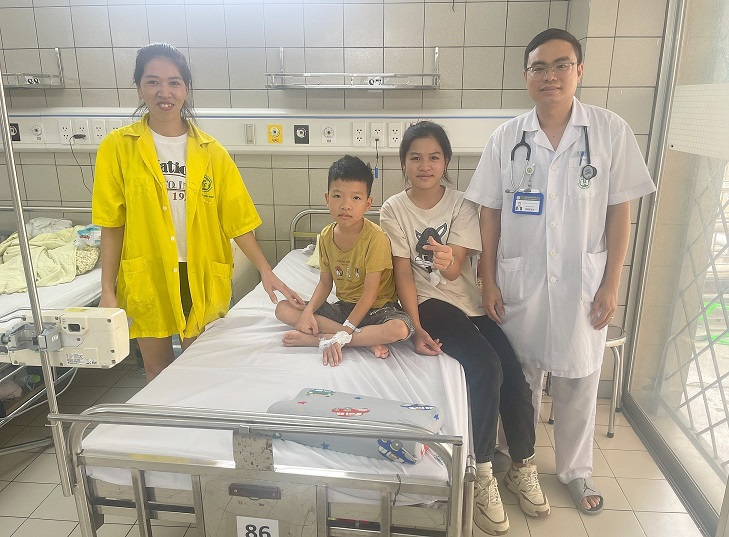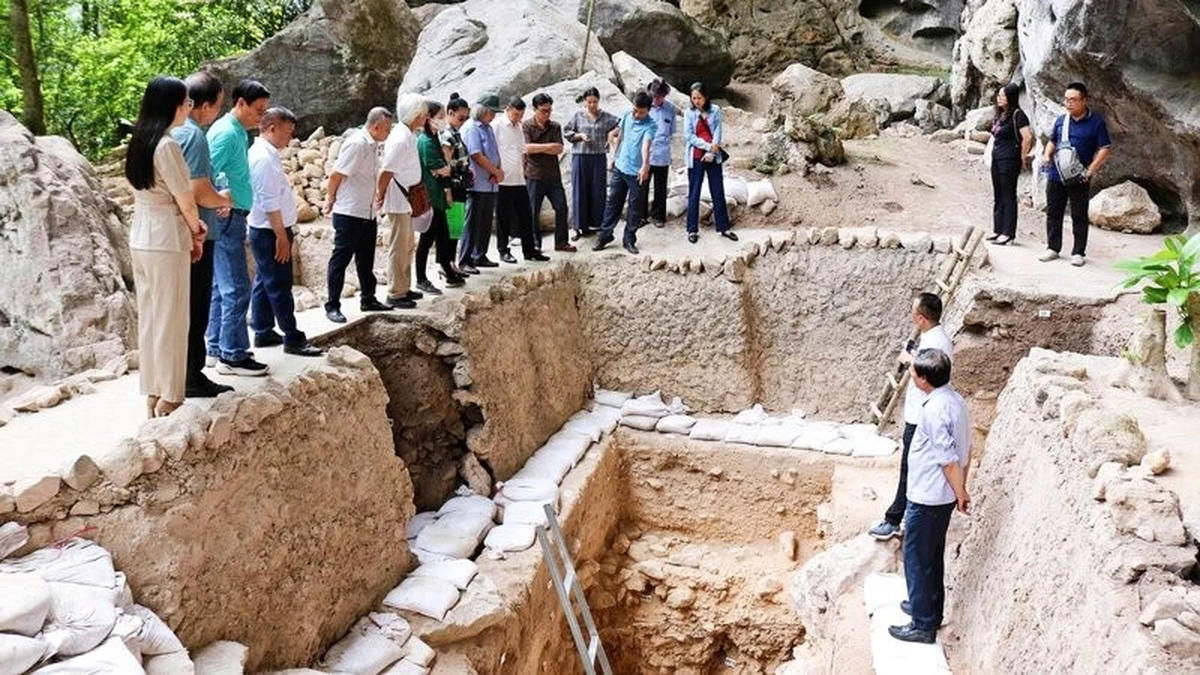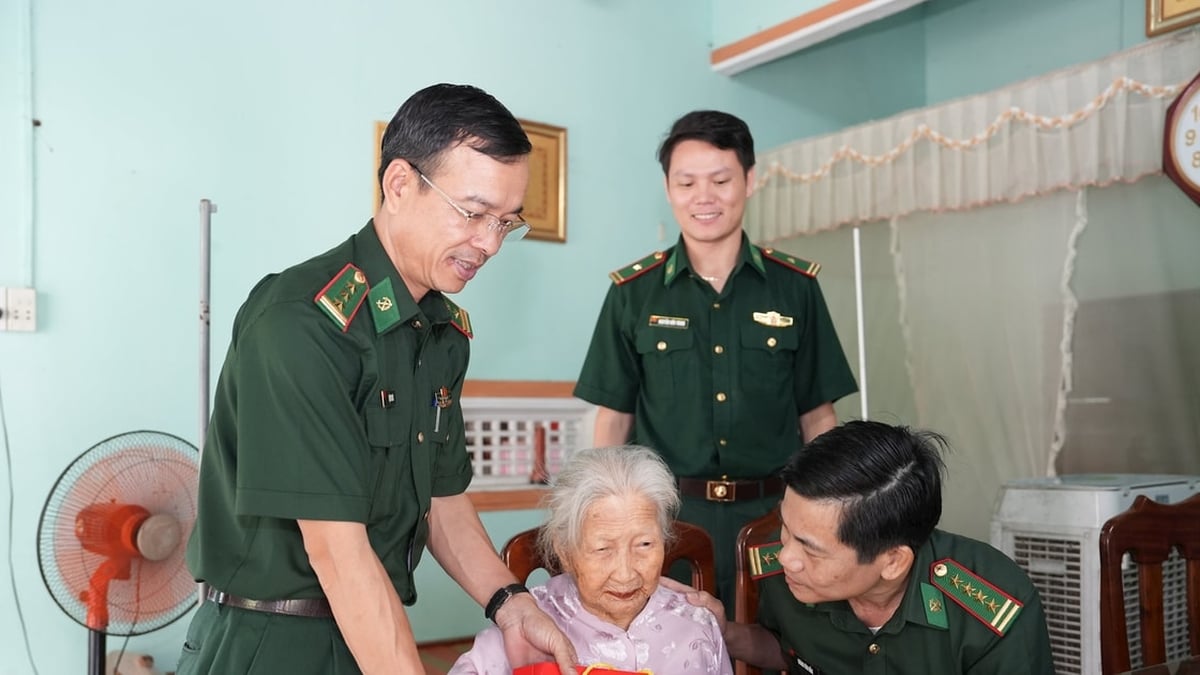On August 2, the Pediatric Center - Bach Mai Hospital received a child (male, 10 years old) in Phu Xuyen - Hanoi who was transferred from the Agricultural Hospital in a state of intubation, requiring a ventilator, respiratory failure, drowning, and acute pulmonary edema.
The patient's older sister (11 years old) recounted: On August 2, while her siblings were playing, her younger sibling (10 years old) slipped and fell into the pond. Her two older siblings (who knew how to swim) quickly dove into the pond to find and pull her up.

Thanks to the sister's proper initial first aid, the child was saved, leaving no sequelae (photo source Bach Mai Hospital).
From the time the child drowned until the time they were rescued was about 2 minutes. When they picked her up, she was unconscious, pale, and limp, so I (the patient's sister) put my ear to her chest and listened to her heart. It was still beating but weak. When I touched her nose, I felt her breathing was very weak.
With the knowledge of first aid for drowning people provided by the school and watched on TV, I gave him artificial respiration and chest compressions and saw a little water come out.
After pressing the heart twice, she said: help (but very softly) so I continued pressing and she opened her eyes wide to look at me. While I was pressing the heart and giving her CPR, she told everyone to go call for help.
MSc. Dr. Nguyen Huu Hieu - Pediatric Center, Bach Mai Hospital said: Exploiting the patient's medical record shows that when admitted to the Agricultural Hospital, the patient was conscious, slightly purple, was given oxygen and diuretics because the patient had acute pulmonary edema.
After about 3 or 4 hours, the patient had difficulty breathing, had a high fever, and had blood oxygen levels drop to about 80-85%.
The patient was intubated and transferred to the Pediatric Center - Bach Mai Hospital at 6 hours (from the time of drowning).
The patient was admitted to the hospital with endotracheal intubation, SPO2 maintained at 94%, pink foam reflux through the endotracheal intubation, and poor lung ventilation.
Bedside X-ray showed clear pneumonia and pulmonary edema. Sedated and on ventilator.
After about a day, the patient's condition improved. The ventilator index was low, blood oxygen was good, and the ventilator was removed.
Doctor Hieu emphasized: Fortunately, the patient's initial emergency treatment was very reasonable, using the knowledge and skills learned at school and on television when saving a drowning person.
When the patient was rescued, he was cyanotic, his heart was still there but weak, and he was not breathing on his own. The older sister immediately performed CPR, chest compressions, and called adults for help.
And after 2 to 3 times of performing CPR, the patient was more awake and then taken to the infirmary.
If the patient is not given proper first aid, after about 5 minutes the patient may stop breathing, have cardiac arrest leading to serious sequelae or death.
Correct first aid steps for drowning victims: Step 1: We must assess the scene, the scene must be safe before we can treat the patient (when the scene is not safe, we ourselves will be the victims, if we do not know how to swim, we must find tools to rescue the patient and call for help).
Step 2: When saving the patient, we must assess the patient's airway, heart, and lungs.
Press on the patient's nose, mouth, and chest to see if he or she is breathing and listen to see if there is a heartbeat.
If you see the patient stop breathing, stop heart, or turn cyanotic, perform chest compressions and mouth-to-mouth resuscitation immediately.
With external assessment, we can perform chest compressions and mouth-to-mouth resuscitation in a ratio of 30/2 (30 chest compressions, 2 mouth-to-mouth resuscitation).
After about 4 to 5 times we re-evaluate to see if the patient can breathe and has a heart.
If not, we continue CPR until help arrives.
When giving first aid to a patient, place the patient on a hard surface, lying on his side safely to avoid reflux into the airway, and tilt the patient's neck back to clear the airway.
Ensure emergency treatment on site first, then transfer the patient after stabilization.
If the patient is in respiratory or cardiac arrest and is transferred immediately, the patient will certainly have many sequelae or die.
Source





































































































Comment (0)